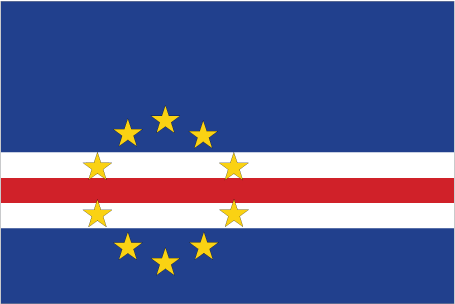To help inspire or plan your trip to Cape Verde, some of its major attractions
for travellers are shown below, including some of the best natural, historical, cultural and adventure sites in the country.
These include all of UNESCO World Heritage Sites for Cape Verde which represent the best
of the world's cultural and natural heritage.
Click on the icons below to focus on specific types of features
(click again to return to all).
|
|
|
|
|
|
|
|
|
|
|
|
 |
|---|---|---|---|---|---|---|---|---|---|---|---|
| Natural | History | Wildlife | Trekking | Cities | Religious Monument | Boat Journey | Rail Journey | Diving | Cultural | Adrenaline | UNESCO WHS |
| Cidade Velha | |
|---|---|
Cidade Velha, the historic centre of Ribeira Grande on the island of Santiago, was the first European colonial town to be built in the tropics. From the 16th century onwards, it was a key port on trade routes to Africa and the Cape, the Caribbean and South America and an important site for the slave trade. The colonial remains include two churches, the fort and Pillory Square with its ornate 16th century marble pillar. UNESCO World Heritage Site: Cidade Velha, Historic Centre of Ribeira Grande | |
| Pico de Fogo | |
|---|---|
Pico de Fogo is the highest volcanic peak on the island of Fogo. The entire island originated as one giant volcano - eruptions and collapses have created a vast caldera known as the Cha das Caldeiras (or Plain of Craters). The cone of Pico de Fogo stands at 2829 metres and is still active, with the last eruption occurring in 1995. It is one of the steepest volcanic cones on earth but the ascent is rewarded with spectacular views across the crater and out towards Santiago and Brava Islands. | |
| Sao Vicente | |
|---|---|
The island of Sao Vicente was uninhabited until the 19th century when the British established a port at Mindelo supplying coal and shelter to ships on the trans-Atlantic routes. Today, Mindelo retains its colonial atmosphere with some fine examples of English architecture. Monte Verde, the island's highest peak at 774 metres, offers spectacular views of Mindelo, the beach resorts of Baia das Gatas and Calhau and the nearby islands of Santo Antao, Santa Luzia and Sao Nicolau. | |
| Santo Antao | |
|---|---|
The northern Cape Verde island of Santo Antao is renowned for its stunning natural scenery which makes it great for exploring on foot. A chain of mountains runs across the island, with the highest peak of 1979 metres at Tope de Coroa, which provides an almost alpine climate with eucalyptus, cedar and pine forests. A characteristic feature of the island are ribeiras - deep verdant valleys carved into the volcanic rock, of which Ribeira da Torre and Ribeira Grande are of note. Picturesque villages are dotted throughout the island and there are spectacular views of the landscape and coast everywhere you go. | |

